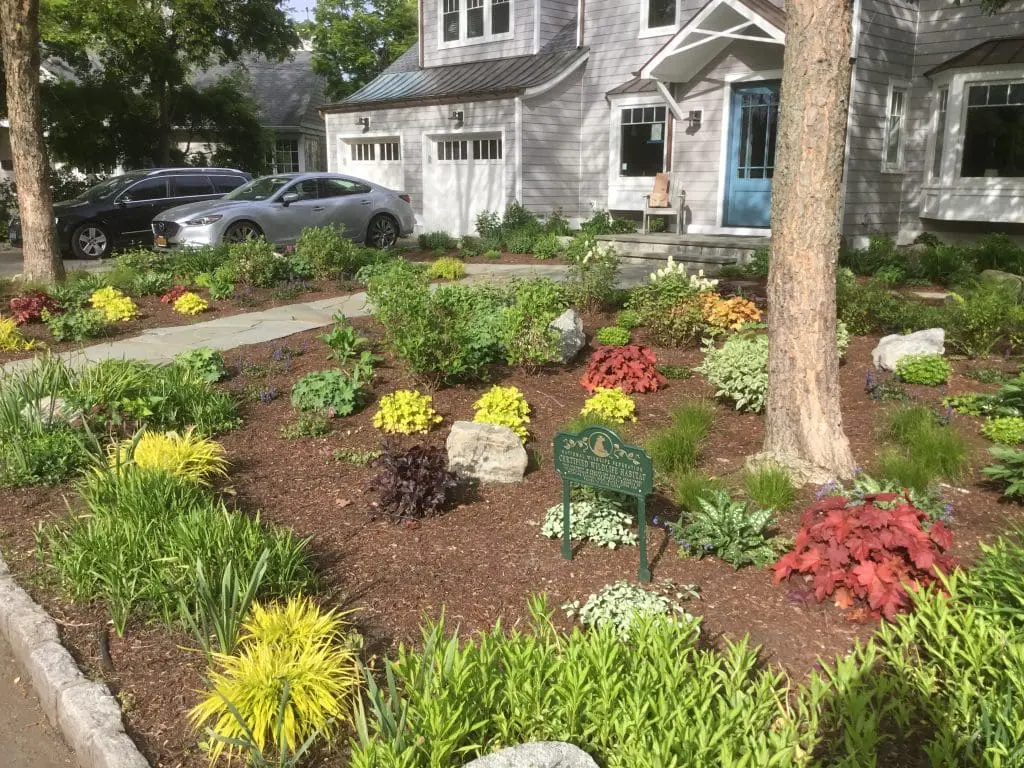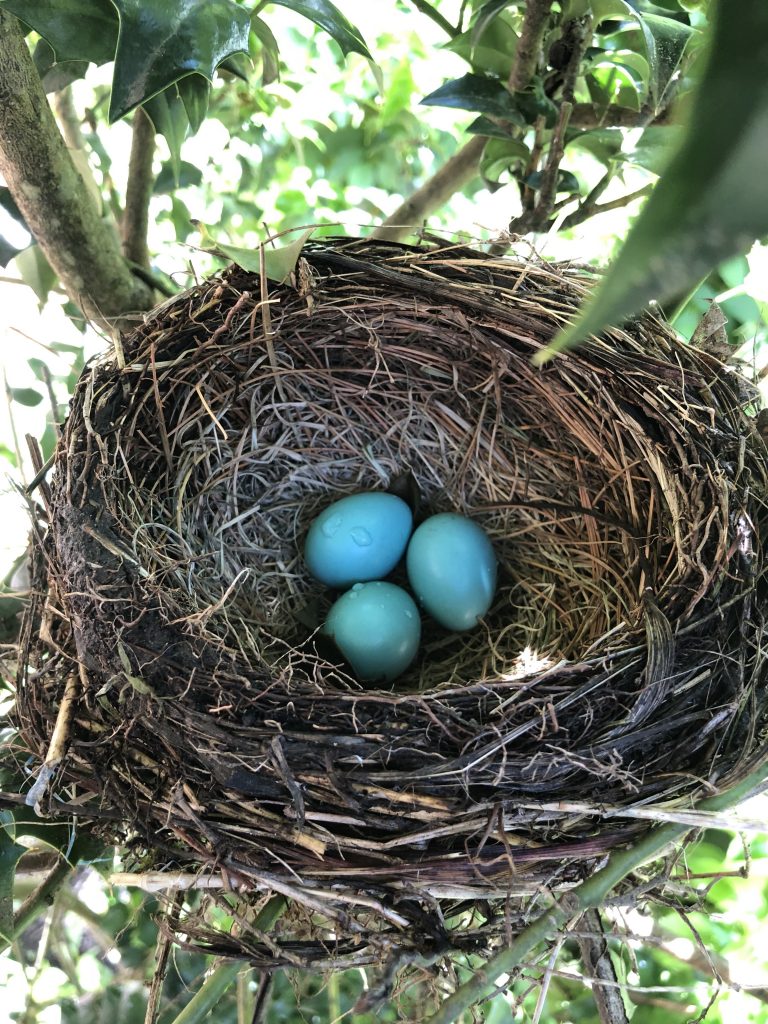This is Part Two in our series Where Have All the Birds, Bees and Butterflies Gone? Catch up on Part One where we discuss the staggering population losses in recent history and the main causes – urbanization, habitat destruction, and exposure to toxic pesticides.
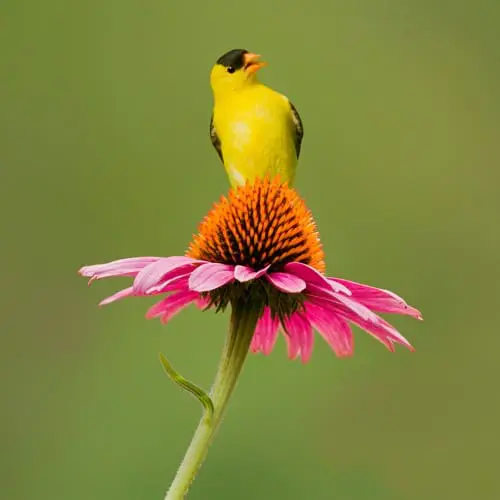
Below we’ve compiled our tips for creating bird habitat for native and migrating birds as well as beneficial insects and pollinators. The guidelines are broad, but we’ve pointed out specific plant-pollinator or plant-bird relationships along the way.
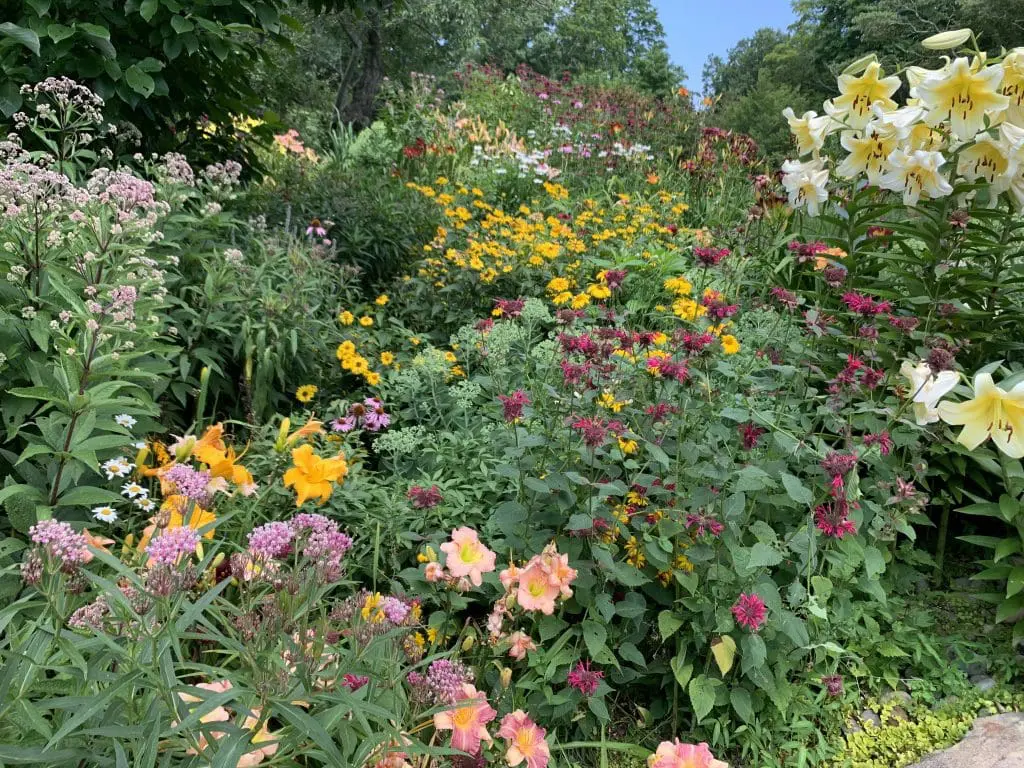
Step One: Invite Insects, Plant Native
Bird habitat starts with creating habitat for insects – birds’ main food source! A diversity of native plants invites a huge variety of native insects for birds to feast on. As we’ve discussed in the past, designing a garden that blooms sequentially will attract and host the most insects. For more information, check out our past blog Designing an Organic Pollinator Garden.
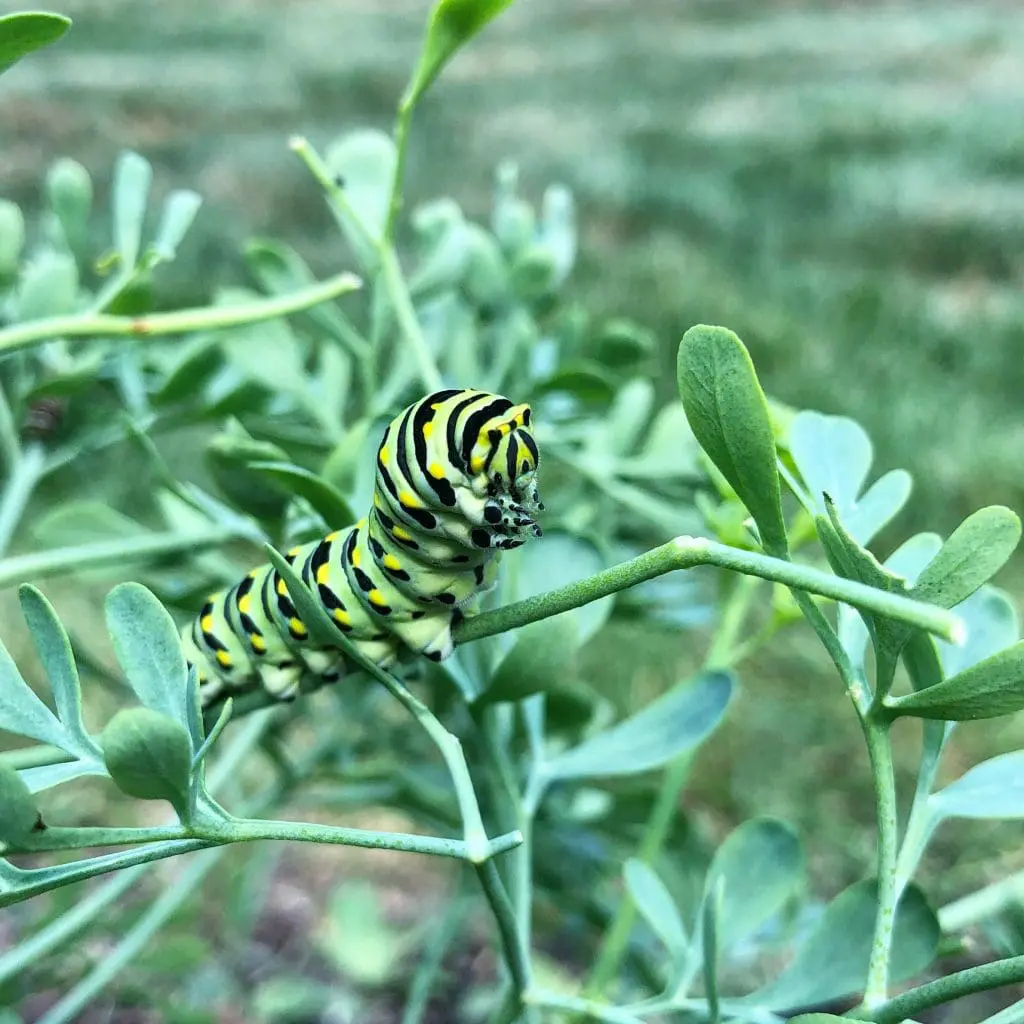
Birds also gather nutrients directly from plants, for example, hummingbirds drink nectar from some flowers (particularly red ones!), orioles are attracted to orange flowers, and many birds eat seeds directly from the flower. Check out this awesome pollinator video with footage taken all by one client in their front yard!
Below are some of our favorite native plants for attracting pollinators and birds. For more information we suggest reading: The Pollinator Victory Garden by Kim Eierman of Ecobenefical and entomologist Doug Tallamy’s Bringing Nature Home. Information also obtained from The Spruce and Audubon Society.
Favorite Perennials for Attracting Birds, Pollinators
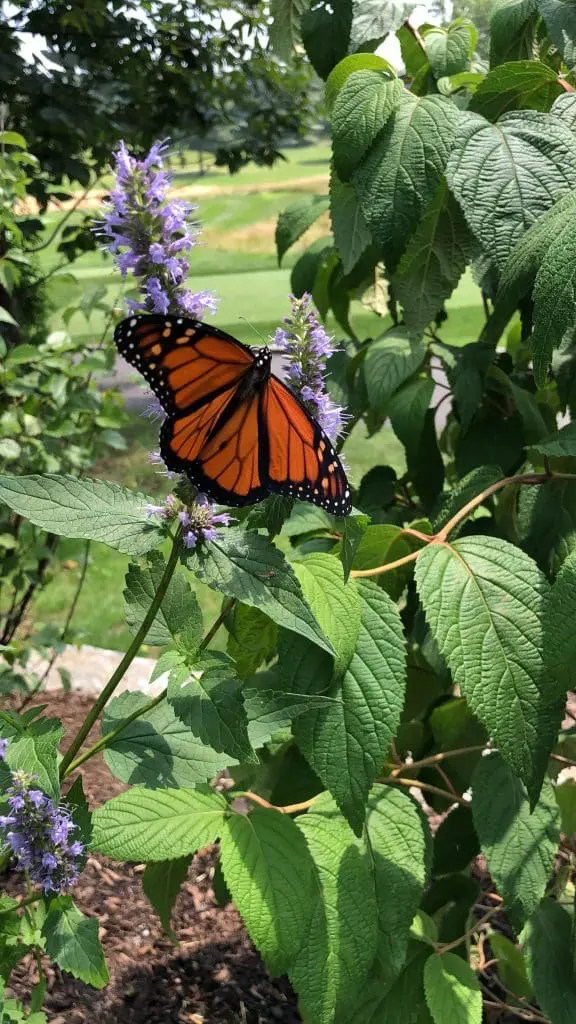
Agastache (Hyssop) – attracts hummingbirds, bees, butterflies; large purple floral display
Aquilegia Canadensis (Eastern Red Columbine) – attracts hummingbirds, requires wet/moist soil.
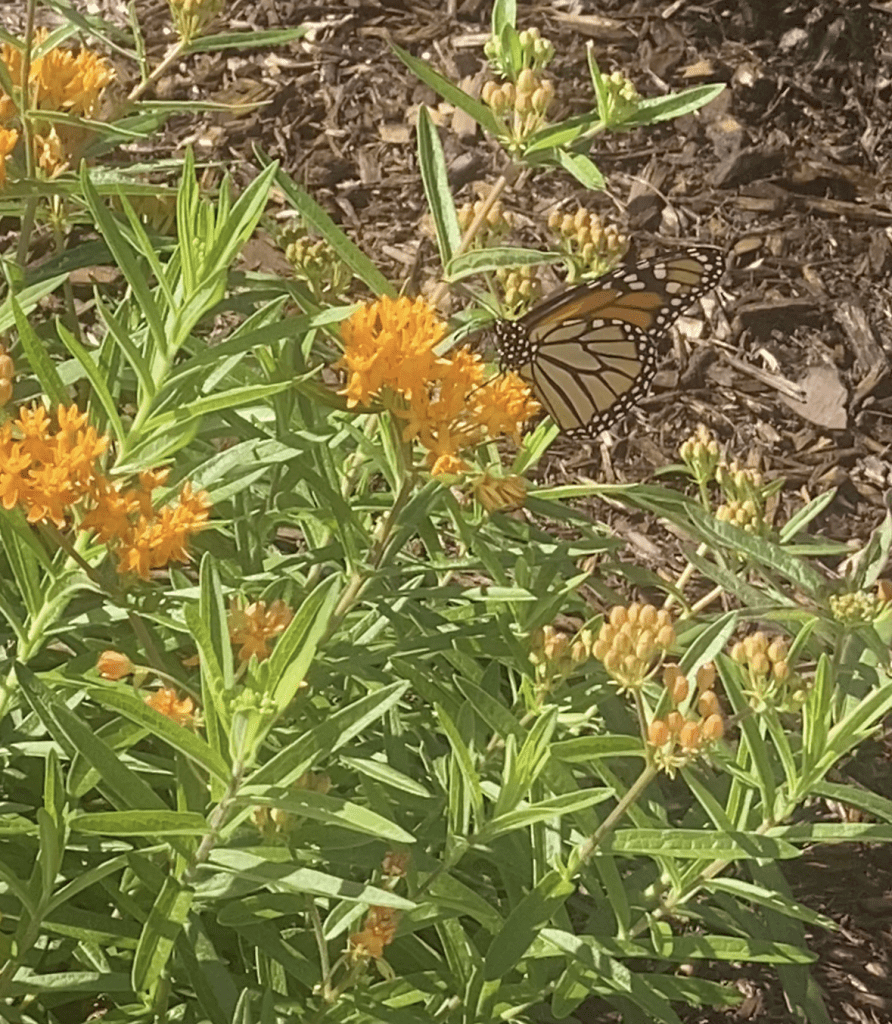
Asclepias (Milkweed) – Monarch host plant!!! Attracts other pollinators too.
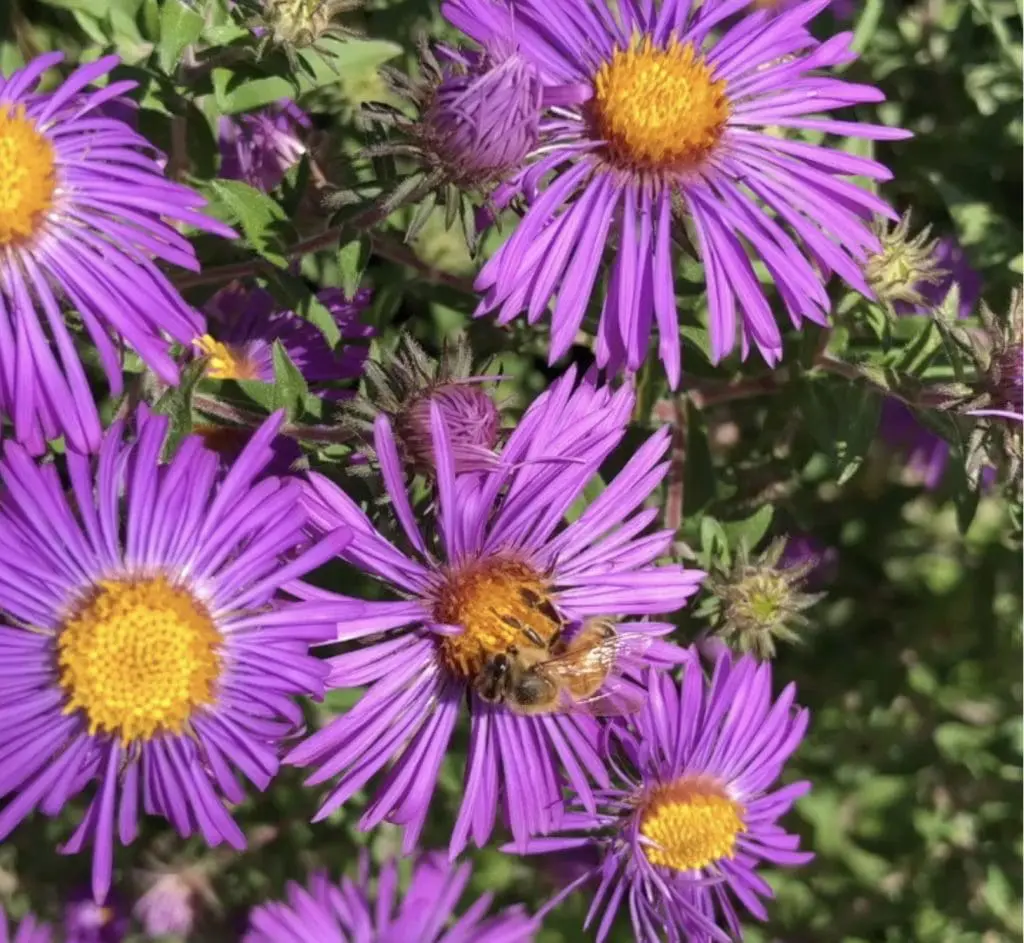
Aster – Attracts pollinators and cardinals, chickadees, goldfinches, indigo buntings, nuthatches, sparrows, towhees feed on seeds
Coreopsis (Tickseed) – attracts pollinators, seeds attract songbirds. Repeat bloomer with a variety of flower and foliage forms.
Delphinium (Larkspur) – attracts hummingbirds
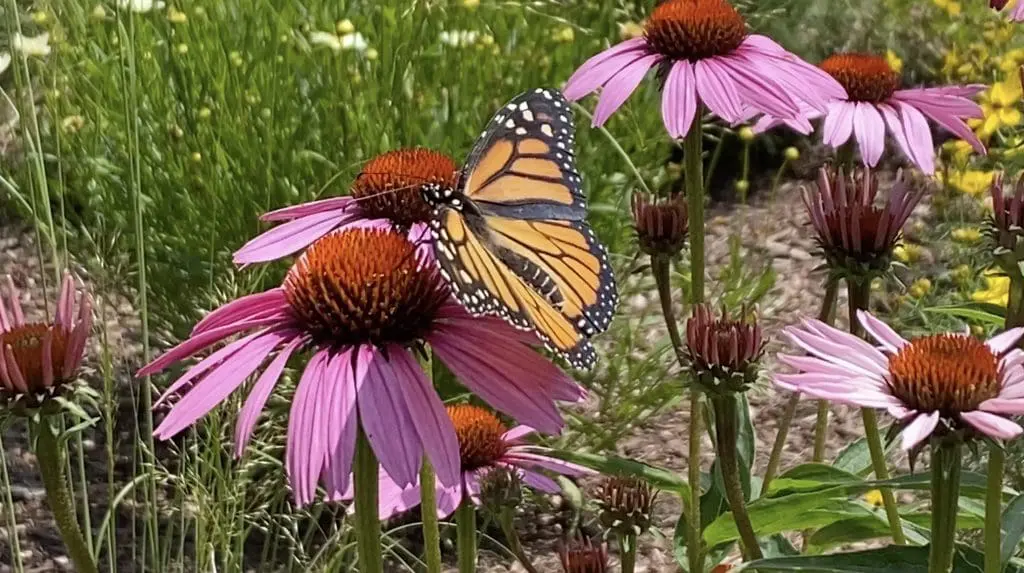
Echinacea (Coneflower) – Attracts pollinators, especially bees and butterflies. Birds will feed on seeds including the American goldfinch and the pine siskin.
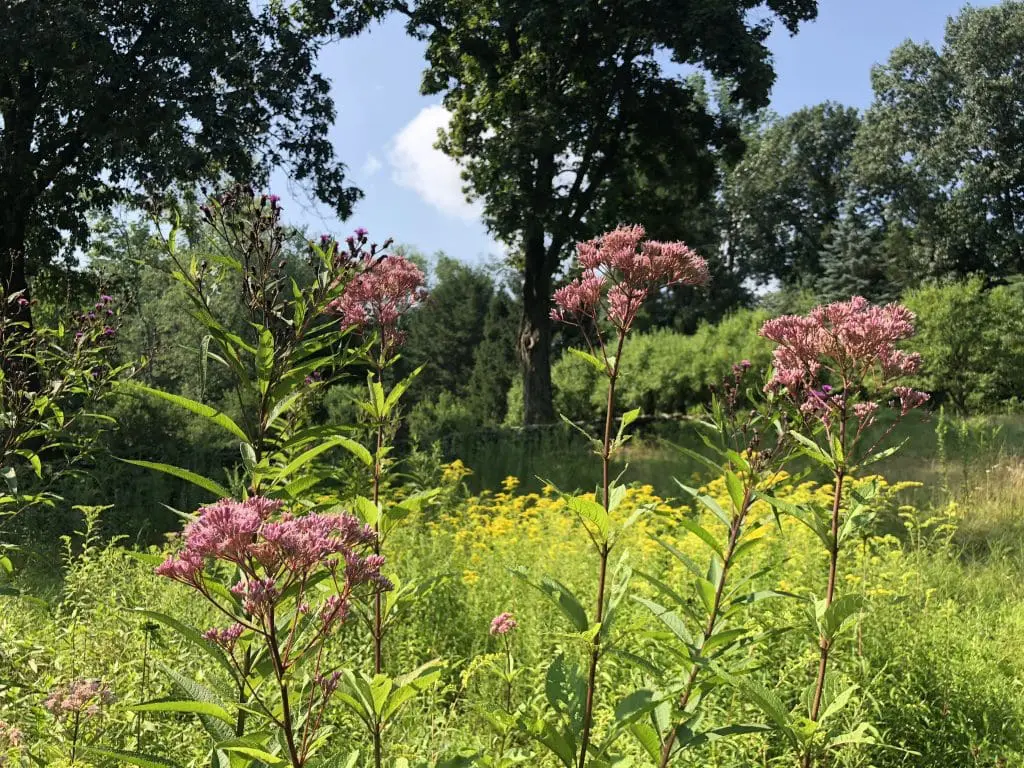
Eupatorium (Joe Pye Weed) – Insanely attractive to pollinators including butterflies like the tiger swallowtail and spicebush swallow tail (and provides larvae food for dozens of other butterfly and moth species). Chickadees, wrens, titmice and juncos feast on the seeds. Straight species is quite tall, smaller cultivars are available.
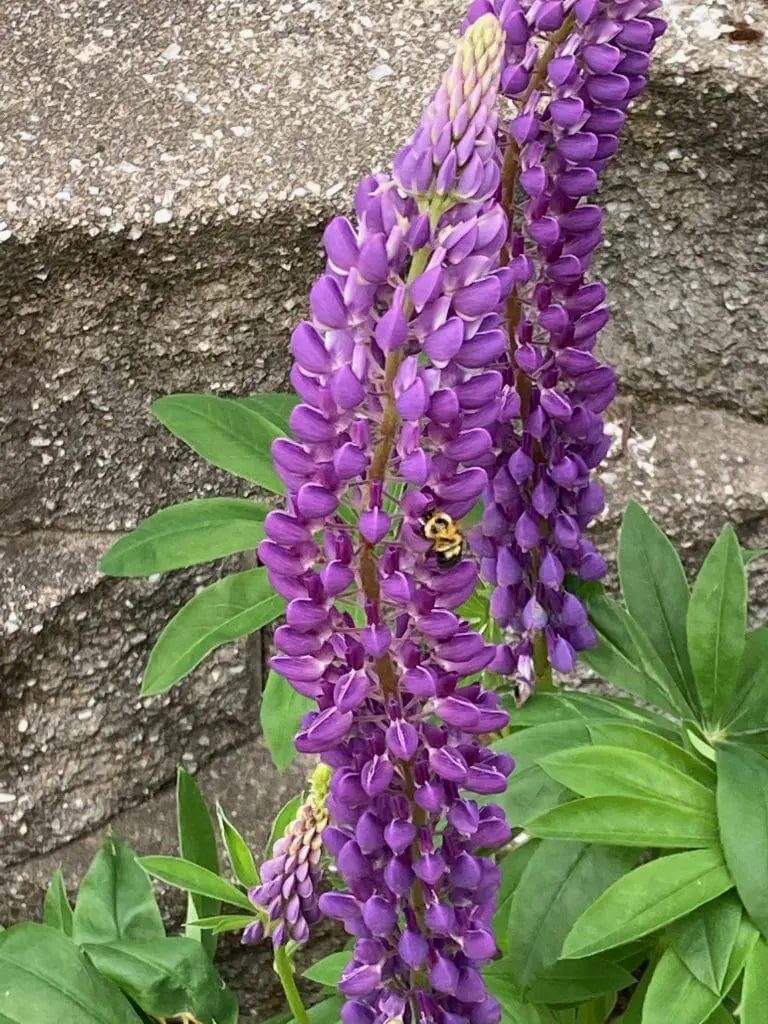
Lupinus (Lupine) – Attractive to bees, hummingbirds. Spring blooms of large, upright flower stalks; interesting foliage; naturally fixes nitrogen in the soil.
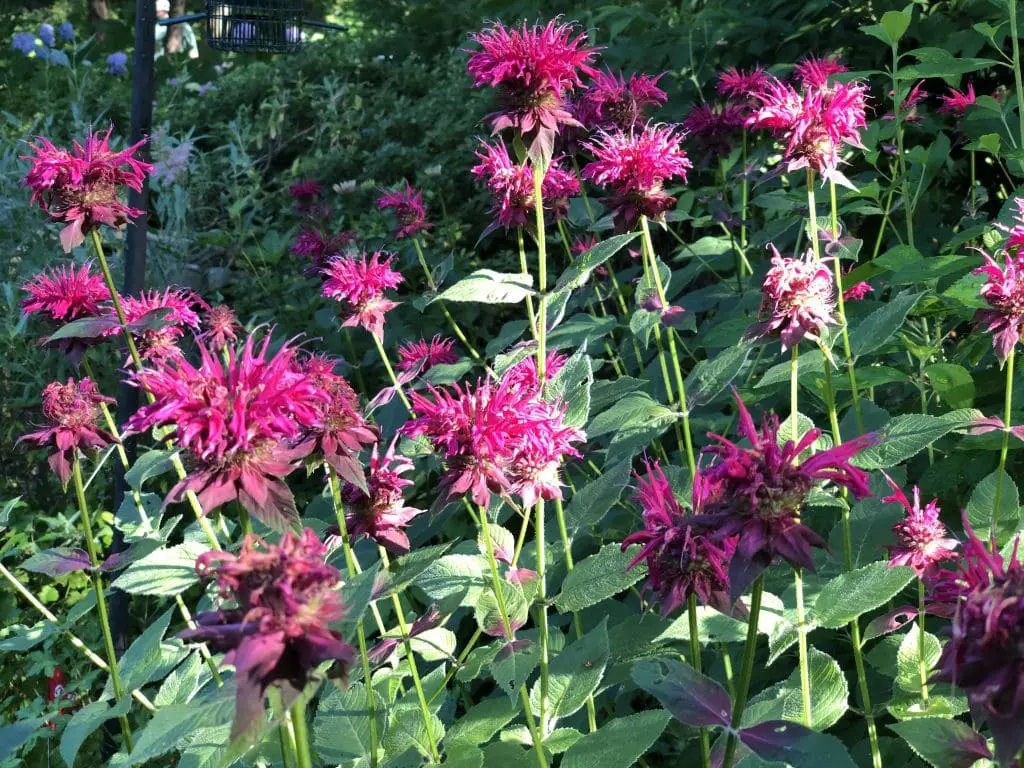
Monarda (Bee Balm) – Attracts bees, as the name suggests, and pollinators as well as hummingbirds! Will repeat bloom if deadheaded.

Rudbeckia (Blackeyed Susan) – Attracts numberous pollinators including Lepidoptera such as the pear crescent, silvery checkerspot and wavy –lined emerald. Also attractrs American goldfinches, chickadees, cardinals, nuthatches, sparrows, and towhees feed on the seeds.
Salvia (Sage) – Attracts hummingbirds, pollinators. Attractive upright flower stalks in a range of purples.
Solidago (Goldenrod) – New England Wildflower Society dubs Goldenrod the number one native perennial for attracting bees and pollinators. It is fall blooming, making it extra important in a season of scarcer food.
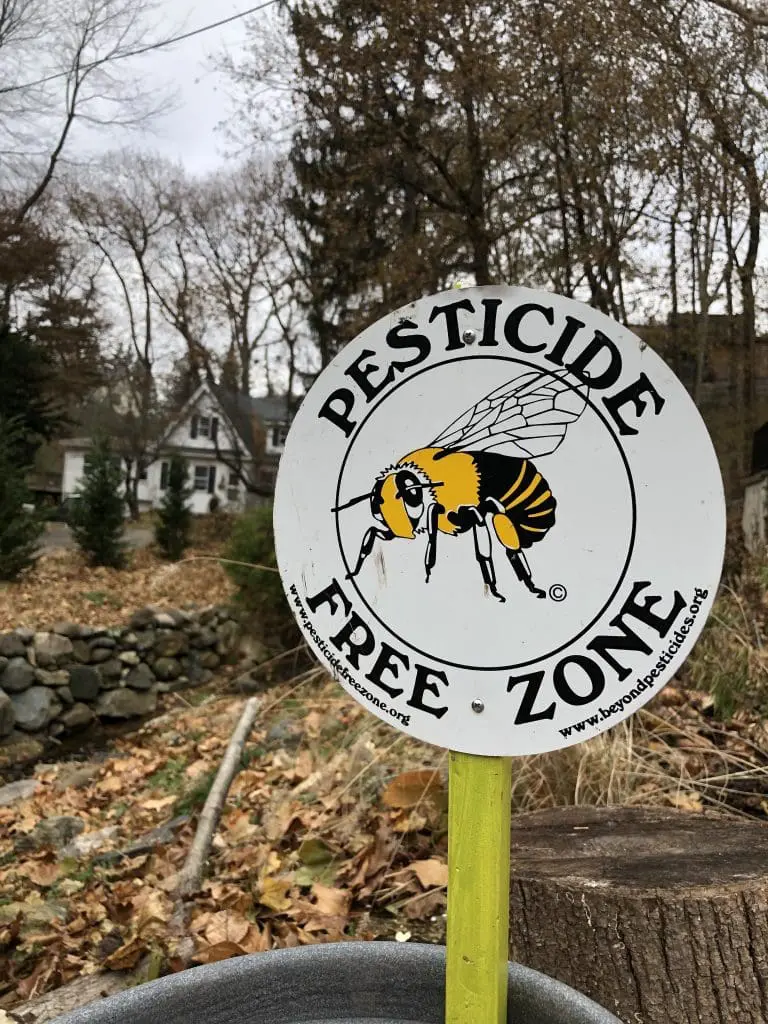
Step Two: Maintain Property Organically
Of course, attracting insects to feed local birds on your property is of absolutely no consequence if your property isn’t managed organically. As discussed in Part One, pesticides are extremely toxic to insects including bees and pollinators, and equally destructive for the birds that eat these insects.
Learn more about our holistic, organic landscape maintenance programs.
Step Three: Trees and Shrubs for Food, Shelter
Most bird species make their nests in shrubs or trees. It is important to have adequate cover and shrub “transition” areas for birds to comfortably travel from edge habitat to your property safely. Some bird species favor certain kinds of materials for making their nests. By providing these, you can encourage nesting on your property. Furthermore, native trees and shrubs are an important source of food (berries) for birds from summer through winter.
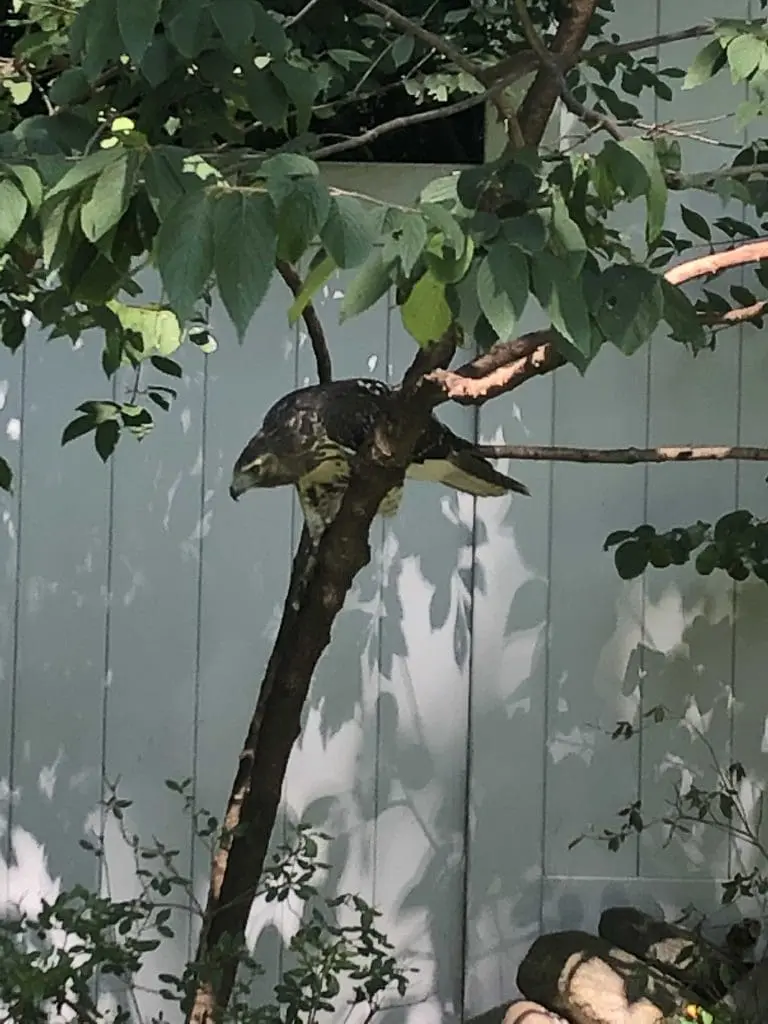
Favorite Native Trees and Shrubs to Attract Birds and Pollinators
Acer (Maple) – Supports 285 species of Lepidoptera (butterflies and moths) according to Doug Tallamy. Seeds become a food source for birds and branches provide nesting habitat for birds like orioles.
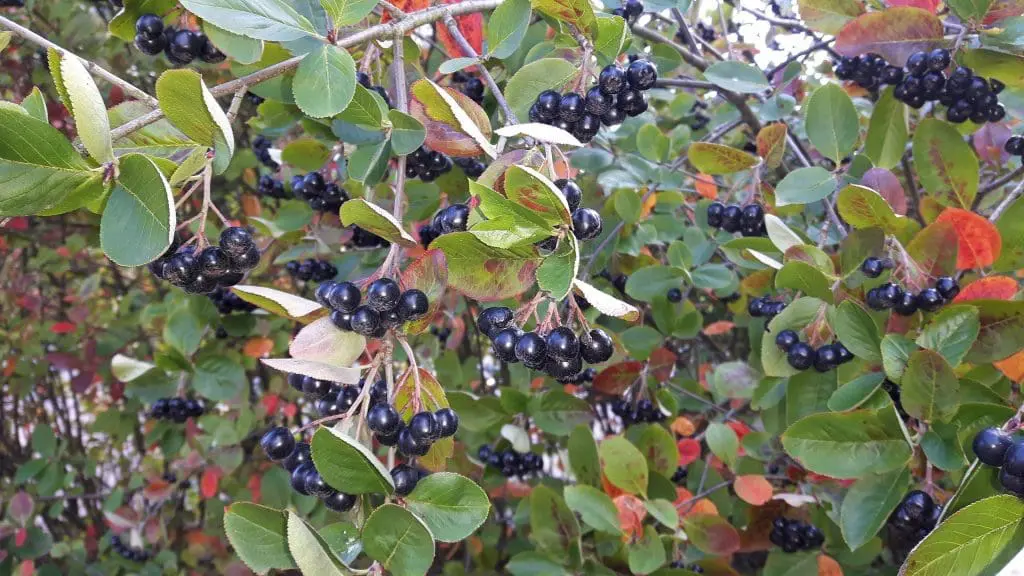
Aronia (Chokeberry) – Red chokeberry’s berries attracts meadowlarks, catbirds, and cedar waxwings. The black chokeberry attracts wild turkeys, jays and mockingbirds. Both are native shrubs with delicate white flowers.
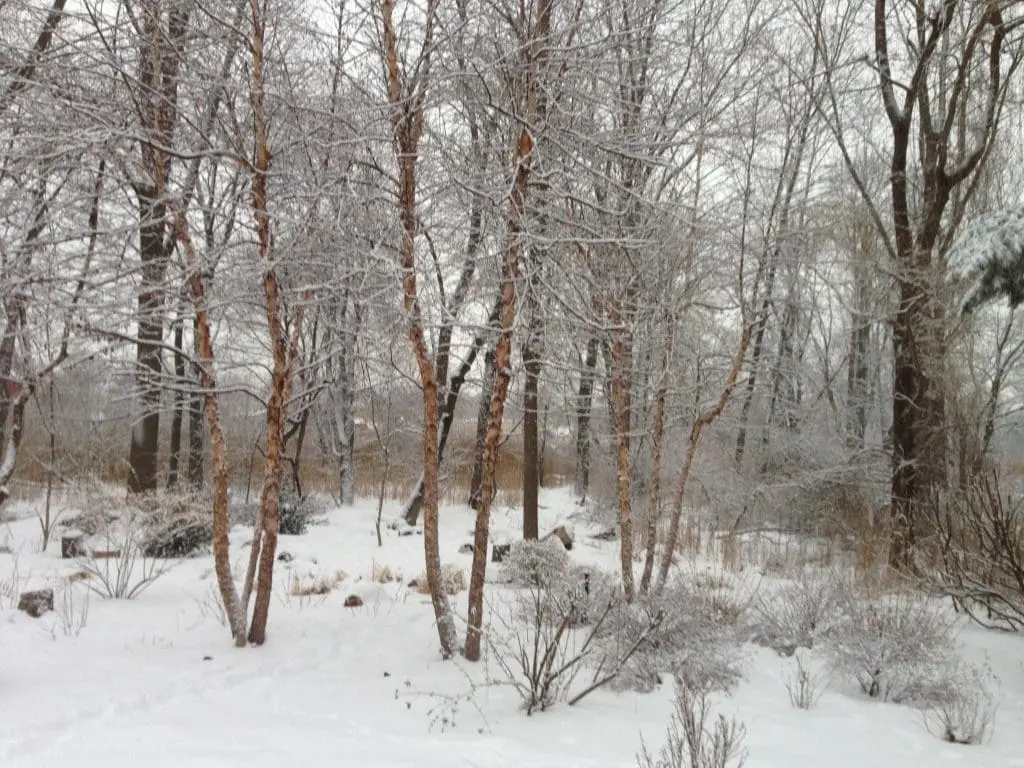
Betula (Birch) – Attracts 413 species of Lepidoptera. Seeds and flower buds become food for songbirds, grouse and turkeys.
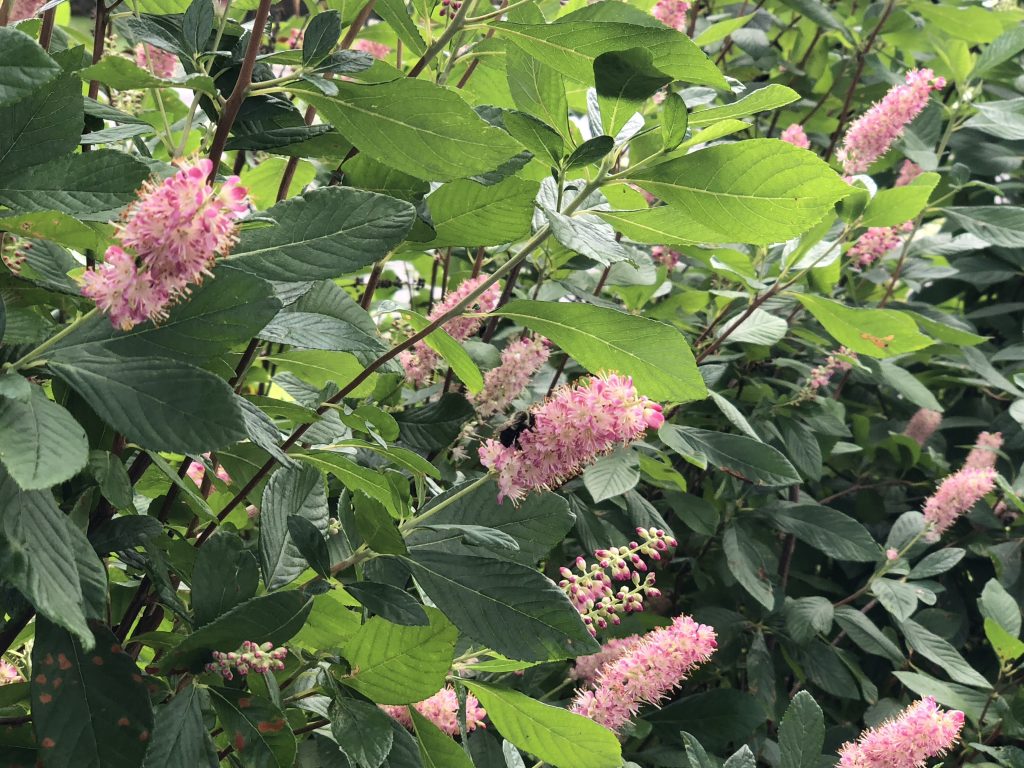
Clethra (Summersweet) – Hugely attractive to bees, pollinators and hummingbirds! There is even a cultivar named ‘hummingbird’. Fragrant shrub with fabulous bloom!
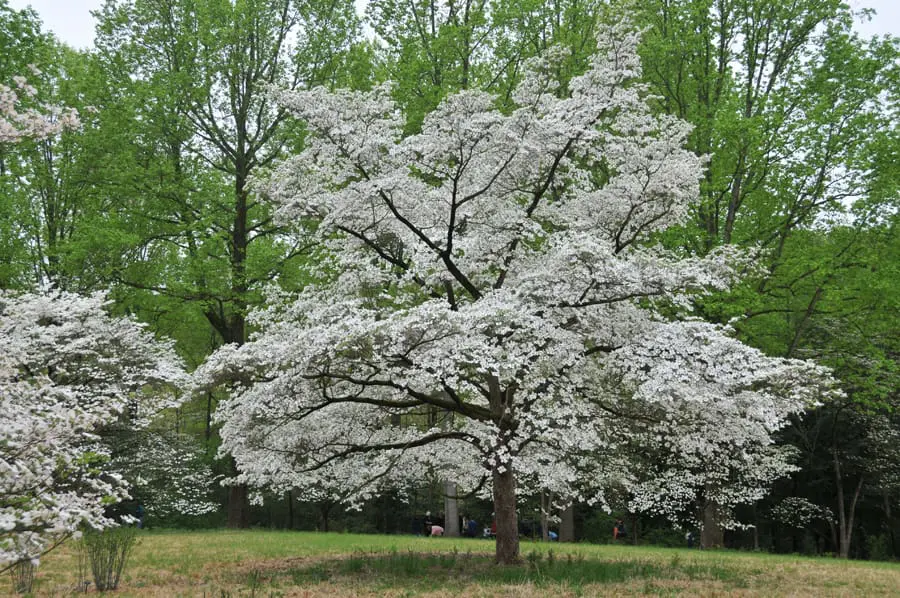
Cornus (Dogwood) – Range from native flowering trees to shrubs with variegated foliage or colored stems. Attracts butterflies like the spring azure. Over 35 species of birds feed on Dogwood fruit including northern cardinals, tufted titmice, bluebirds, juncos and waxwings.
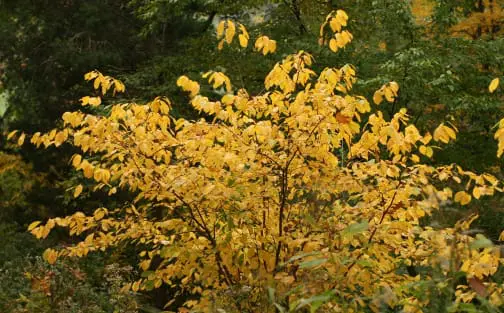
Lindera (Spicebush) – Attracts spicebush swallowtail butterfly, flowers in early spring
Liriodendron (Tulip Tree) – Attracts hummingbirds, tiger swallowtail butterflies. Fast growing native tree.
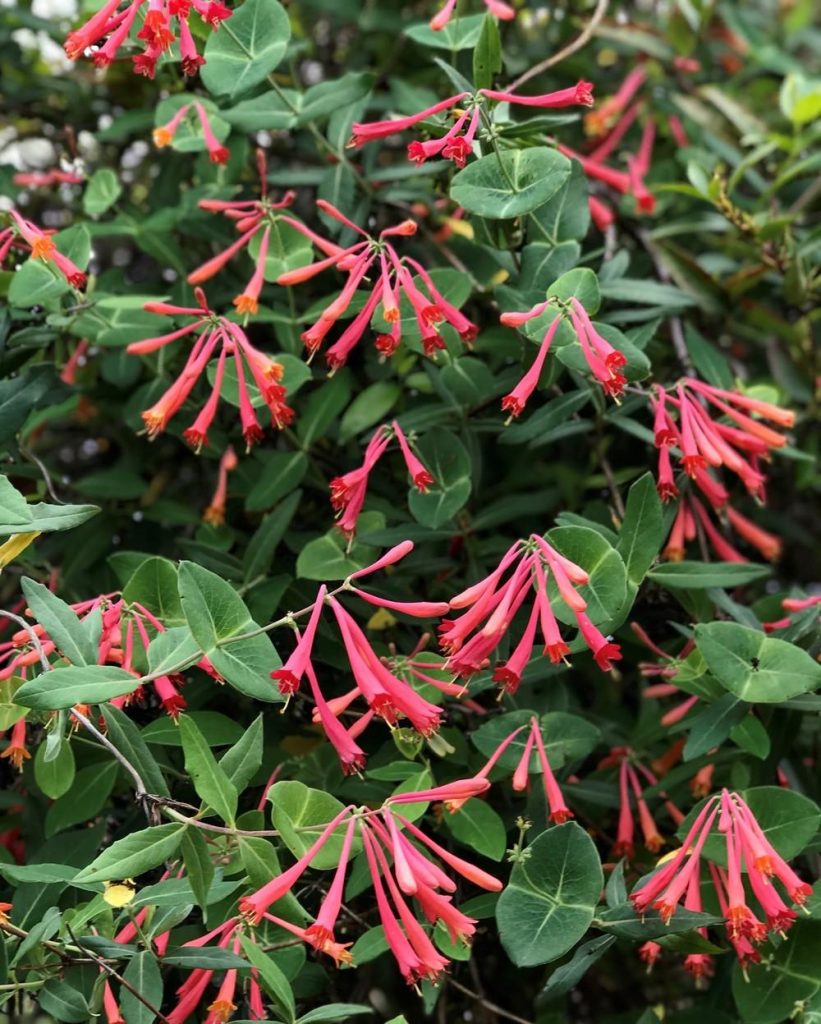
Lonicera (Shrub Honey Suckle) – Attracts hummingbirds, fabulous scent!
Myrica (Bayberry) – Produces berries in summer attracting numerous birds including: American Robin, Black-Capped Chickadee, Cedar Waxwing, Eastern Bluebird, Norther Flicker, Red-Bellied Woodpecker, Red-Eyed Vireo, Tree Swallow, and Yellow-Rumped Warbler.
Populus (Cottonwood, Poplar) – Supports 368 species of Lepidoptera
Prunus (Cherry, Plum) – Attracts 456 species of Lepidoptera and berries support birds diet beginning in late summer.
Quercus (Oak) – Accoring to Doug Tallamy, Oaks suppot 534 species of Lepitoptera! They also support insects like beetles which are excellent bird food as well.
Salix (Willow) – Attracts 456 species of Lepidoptera including commas, viceroys, red-spotted purples, and mourning cloaks. Range from small shrubs to trees. Attract wood-boring beetles and as a result, wood peckers. The shrub pussy willow (Salix discolor), fuzzy flowers that hummingbirds like to use to line their nests.
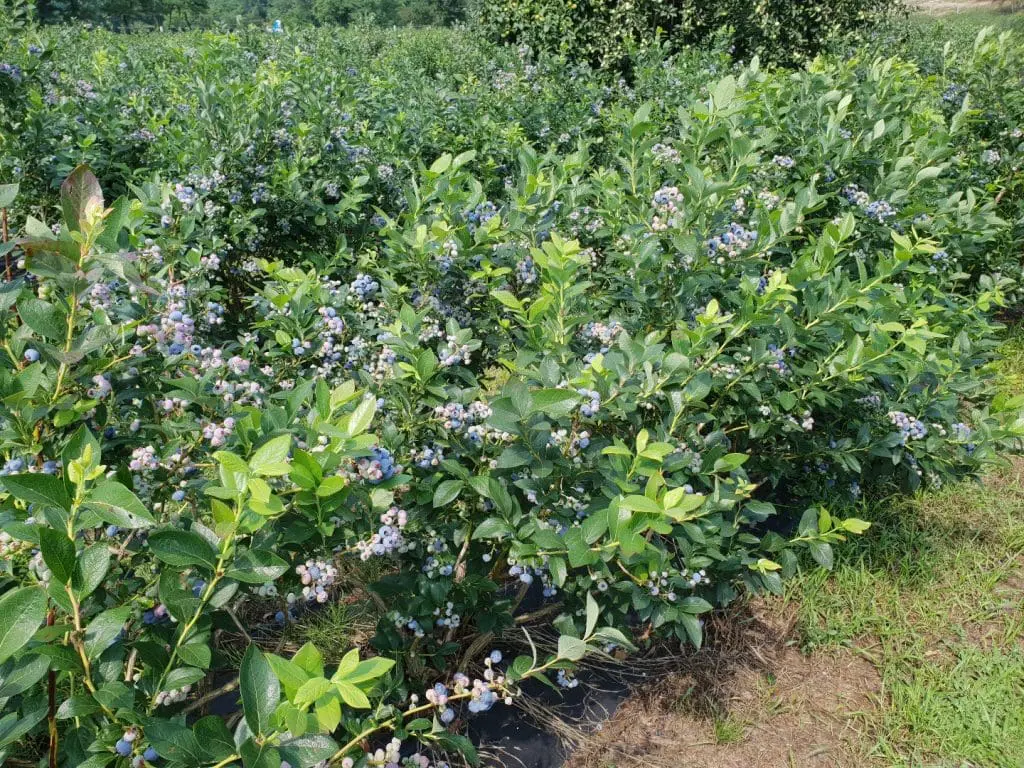
Vaccinium (Blueberry) – Berries provide fruit for countless birds. Host plant for a number of Lepidoptera including Henry’s elfin, spring azure, brown elfin and striped hairstreak.
Viburnum – Group of native berry-producing shrubs that are hugely popular with birds including: cardinals, eastern bluebirds, robins, cedar waxwings. Flower and foliage make it a host to Lepidoptera such as Holly Blue Butterfly, silk moths, sphinx moths, and hummingbird moths.

Step Four: Provide Water
Birds are attracted to the sound of running water and like to have a shallow pool to bathe in. This can be as simple as a birdbath or as elaborate as a designed waterfall, stream or pond. Use rocks to create different depths that birds of various sizes are comfortable wading on. Make sure to refresh the water often to avoid creating mosquito habitat, or install a pump or fountain to keep water circulating.

Step Five: Observe the Show & Tell Your Neighbors
Your work here is done! Sit back, relax and enjoy your at-home bird sanctuary. There is sure to be something going on in your garden at all hours of the day! Take the opportunity to learn from nature’s classroom, and share the excitement with your neighbors! Imagine if your whole neighborhood pledged to use their yards to create organic bird habitat – think of the un-fragmented paradise our native birds would find!
You can even register your property with National Wildlife Fund’s Certified Wildlife Properties and obtain some signage to catch your nieghbors’ eye!
Call or Contact Us to discuss your potential bird habitat – 914-560-6570.
